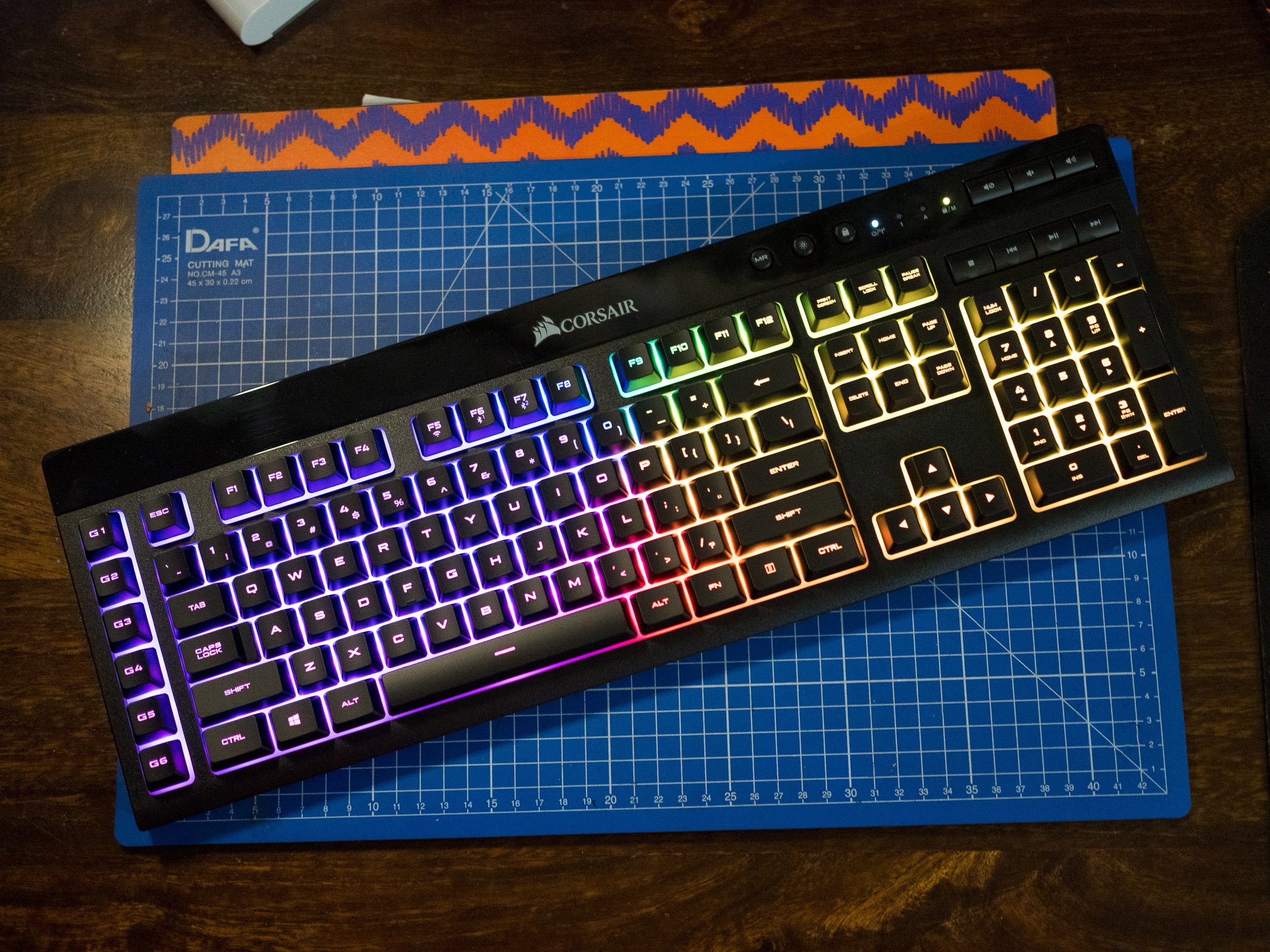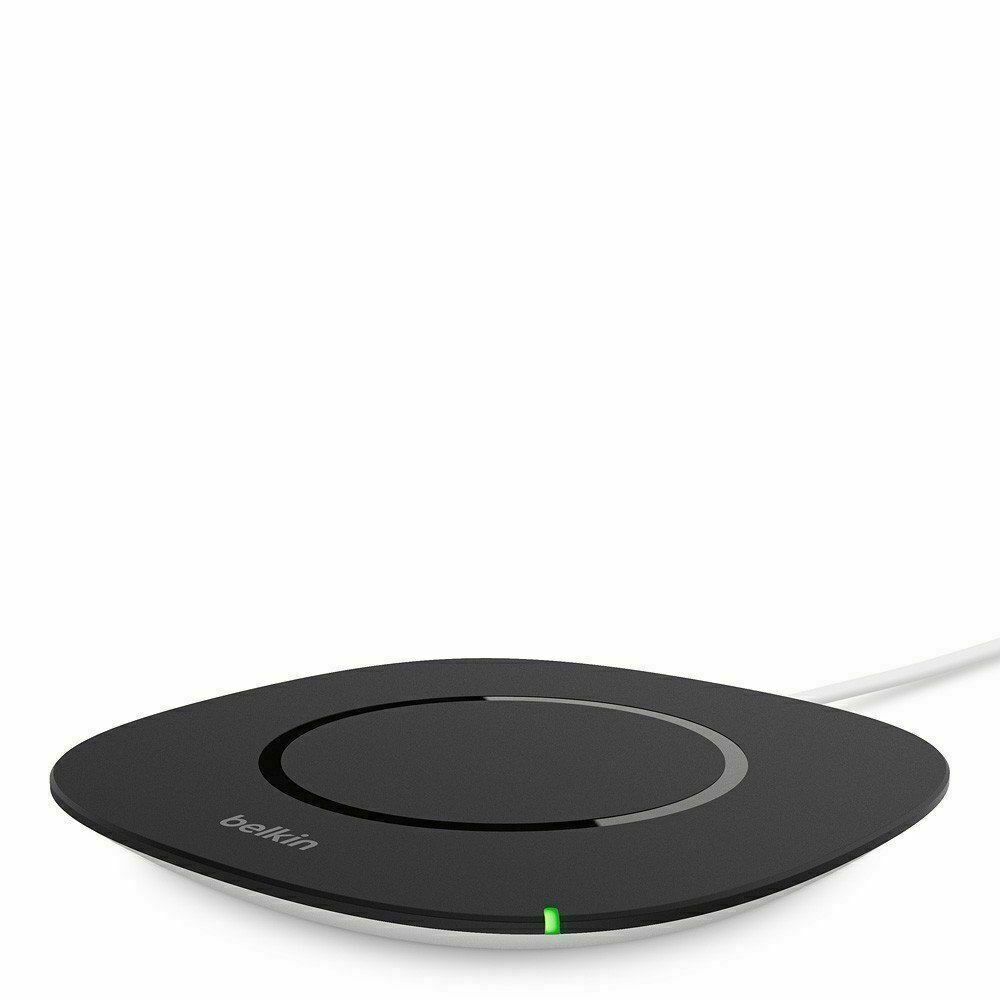
Corsair has a wide variety of gaming keyboards, and its latest $100 option has a host of useful new features. The K57 RGB Wireless is aimed at the budget audience, and comes with Slipstream wireless tech — the first time we're seeing it on a keyboard — and bright LEDs for uniform backlighting.
Corsair had to make a few sacrifices to hit the $100 price point; the K57 has membrane keys instead of the usual Cherry MX mechanical switches. You do get other extras, however: there are six macro keys, a detachable palm rest, individual key lighting that's highly configurable via iCUE, and 1ms wireless connectivity. It's that last feature that should get you excited, as the K57 offers seamless connectivity that's indistinguishable from a wired keyboard. Here's why you should care about the Corsair K57 RGB Wireless Keyboard.

$100
Bottom line: Indistinguishable performance from wired gaming keyboards makes the K57 an enticing option for wireless gamers.Pros
- Same lag-free performance as wired keyboards
- Bright LED backlighting
- Outstanding battery life
- Dedicated macro keys
- Detachable palm rest
Cons
- Plastic finish feels cheap
- iCUE is quirky at times
What you'll love about the Corsair K57 RGB Wireless Keyboard

My primary keyboard of choice is a K95 RGB Platinum. I configured it with Cherry MX Brown switches as I prefer them to the clear switches, but if you're getting a keyboard for gaming, the MX Speed switch is obviously a better bet.
I cycled through a variety of keyboards with MX Blue and Red switches over the years before settling on MX Brown, so when Corsair said it was sending over a keyboard with membrane switches, I was apprehensive. I haven't used membrane keys in over a decade, and I wasn't sure if I would be able to switch to a rubber dome design after such a long time.
With the K57, you don't get the feeling that you're using a membrane keyboard.
My worries proved unfounded, because the K57 RGB Wireless Keyboard brings the best features from Corsair's flagship keyboards to a much more accessible price point. Sure, there is a membrane mat underneath the keys instead of the spring-loaded design of mechanical keyboards, but Corsair offers an intelligent design with a raised key profile that mimics the feel of mechanical switches.
The tactile feedback isn't quite on par with Cherry MX switches, but it is significantly better than what you usually get with membrane keyboards. I've had the K57 RGB Wireless Keyboard for just over a month, and in that time I ended up liking the rubber dome switches much more than I initially thought I would. The raised key profile allows for much better feedback, and while the actuation isn't as smooth as a mechanical switch, the stiffness of the keys makes it a great option for gamers.






The K57 shares the same aesthetic as the rest of Corsair's keyboard portfolio — it is near-identical to the K95 — but it has a plastic frame instead of an aluminum chassis. There are six macro keys to the left, and you get dedicated media controls and buttons for adjusting the volume. You miss out on the volume roller that's found in Corsair's premium keyboards, but that's a minor omission. The power switch is located at the front, and there's also a USB receiver that slots into its own enclosure.
All the latest news, reviews, and guides for Windows and Xbox diehards.
In real-world usage, you won't notice any difference between wireless and wired performance — it's that good.
The standout feature on the K57 is the Slipstream tech. Corsair says Slipstream is twice as fast as regular 2.4GHz wireless keyboards, with sub-1ms latency. That claim holds up in real-world usage: the K57 RGB Wireless was just as fast as my wired K95 Platinum at registering keystrokes, and not once I felt like I was using a wireless keyboard. I didn't notice any difference when switching between wired and wireless modes on the K57 either. You get eight-key rollover, and the switches are designed for 20 million keystrokes.
Corsair is advertising that you'll be able to use the keyboard at up to 60ft without any noticeable lag in Slipstream mode, making the K57 a decent option for couch gaming. You can also use the K57 over Bluetooth — with the ability to connect to three devices — and while you'll see some lag, it is better suited for productivity tasks. Of course, if you don't want to go wireless, you can always plug in the Micro-USB cable and use the K57 as a wired keyboard. The versatility on offer here makes it a standout keyboard at this price point.
These LEDs are the brightest I've seen on any keyboard.
Another interesting feature on the keyboard is the RGB lighting. Corsair offers per-key lighting and fine-tuned customization via iCUE, and the keyboard features Capellix LEDs that consume 60% less power while providing up to 60% better brightness. The LEDs just take up a fraction of the surface area as convential LEDs, and the energy efficiency on offer makes them ideal for wireless devices like the K57.
And Corsair's claims about brightness holds up: the LEDs on the K57 are the brightest I've seen on any keyboard. Key illumination is on the lowest setting out of the box, but you can switch it on the fly via the dedicated button that sits next to the volume controls. You can also customize lighting effects and set zone-based lighting via iCUE, which offers a wide array of features.
With the LEDs turned all the way up to maximum brightness, you'll get eight hours of battery life. At the lowest setting it's 35 hours, and with the LEDs off the K57 RGB Wireless will last 175 hours. That's much more than what you would need from even the most intense of gaming sessions a week, and in my usage I found that a weekly charge was more than adequate.
What you'll dislike about the Corsair K57 RGB Wireless Keyboard

There really isn't a whole lot that's wrong with the K57 RGB Wireless Keyboard. My only quibble is with the plastic frame; it doesn't have the same rigidity as an aluminum chassis. Of course, Corsair had to cut costs somewhere, so it makes sense that the brand went with a plastic chassis for the K57.
While Corsair's iCUE has plenty of customization options, it isn't the most intuitive. You'll have to dig around in the settings to find the option you're looking for, and Corsair could do more to simplify the interface.
Should you buy the Corsair K57 RGB Wireless Keyboard?

The K57 RGB Wireless Keyboard gets a lot right: the wireless performance is on par with wired keyboards, you get a host of connectivity options, and those energy-efficient LEDs alleviate any worries around battery life.
Sure, the membrane keys don't offer quite the same tactile feedback as mechanical switches, but this is definitely not a deal-breaker. After using the keyboard for over a month, I can confidently say that this is the best implementation of a membrane keyboard I've used yet.
The K57 is an ideal option if you want a wireless gaming keyboard with all the bells and whistles but don't want to spend a lot of money.

Outstanding wireless performance.
The Corsair K57 delivers wireless performance that's indistinguishable from a wired keyboard. Combine that with outstanding battery life, bright LEDs, dedicated macro keys, and highly customizable software and you get a great keyboard for wireless gamers.
Portable (and affordable) power accessories we love
Each and every one of these charging gadgets will keep your favorite gear and gadgets going for longer, and none of them costs more than $30.

VisionTek 8,000 mAh micro-USB power bank ($13 at Dell)
This compact dual-output powerbank can speedily recharge any and all your devices, thanks to a two-amp "fast charge feature," using its micro-USB out port. Its simple design includes an LED indicator, and it costs about as much as a single ticket to the movies.

Panasonic eneloop AA batteries (From $13 at Dell)
Panasonic's rechargeable batteries are among the best available, and just a couple of them will keep your favorite remote, mice or other peripherals powered up when you need them. They're also eco. And the company's affordable charger fits and charges both AA and AAA batteries at the same time.

Belkin Qi Wireless Charging Pad ($30 at Dell)
This unobtrusive Qi wireless charging pad looks good (and kind of like a UFO …) and easily charges all your Qi-compatible device up to 5W. Its LED indicator lights up when you're charging. And it costs just $30.

Harish Jonnalagadda is a Senior Editor overseeing Asia for Android Central, Windows Central's sister site. When not reviewing phones, he's testing PC hardware, including video cards, motherboards, gaming accessories, and keyboards.

